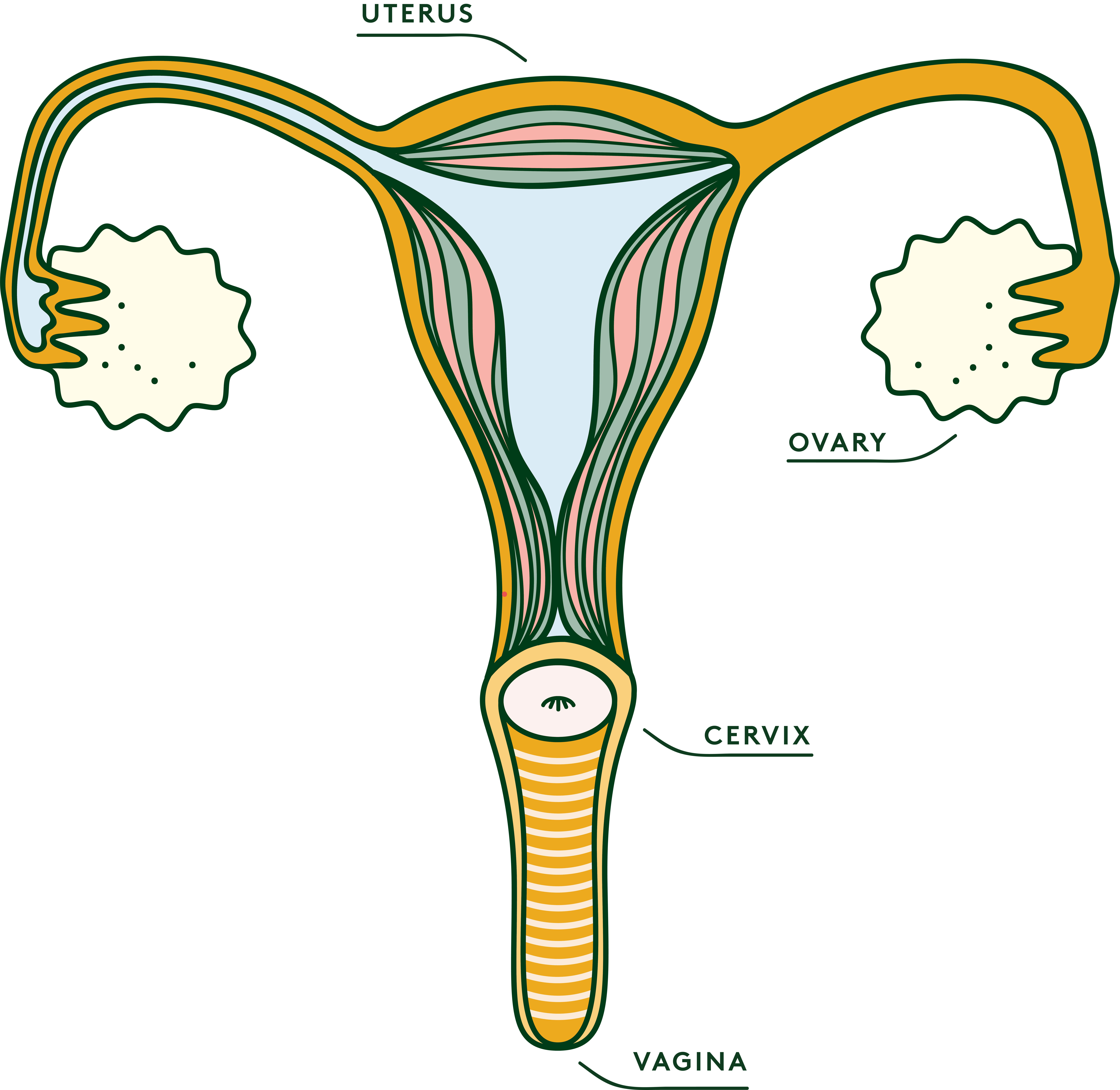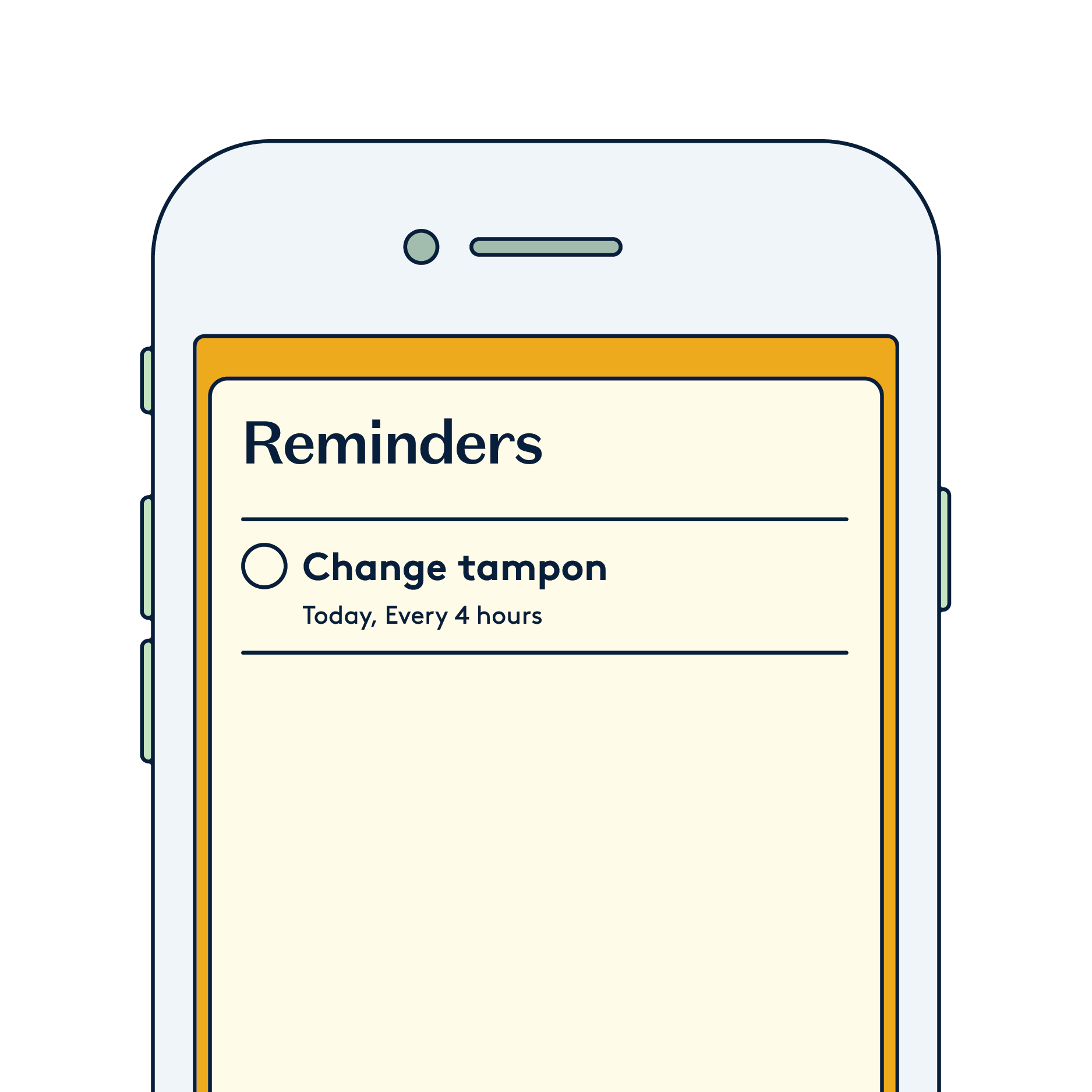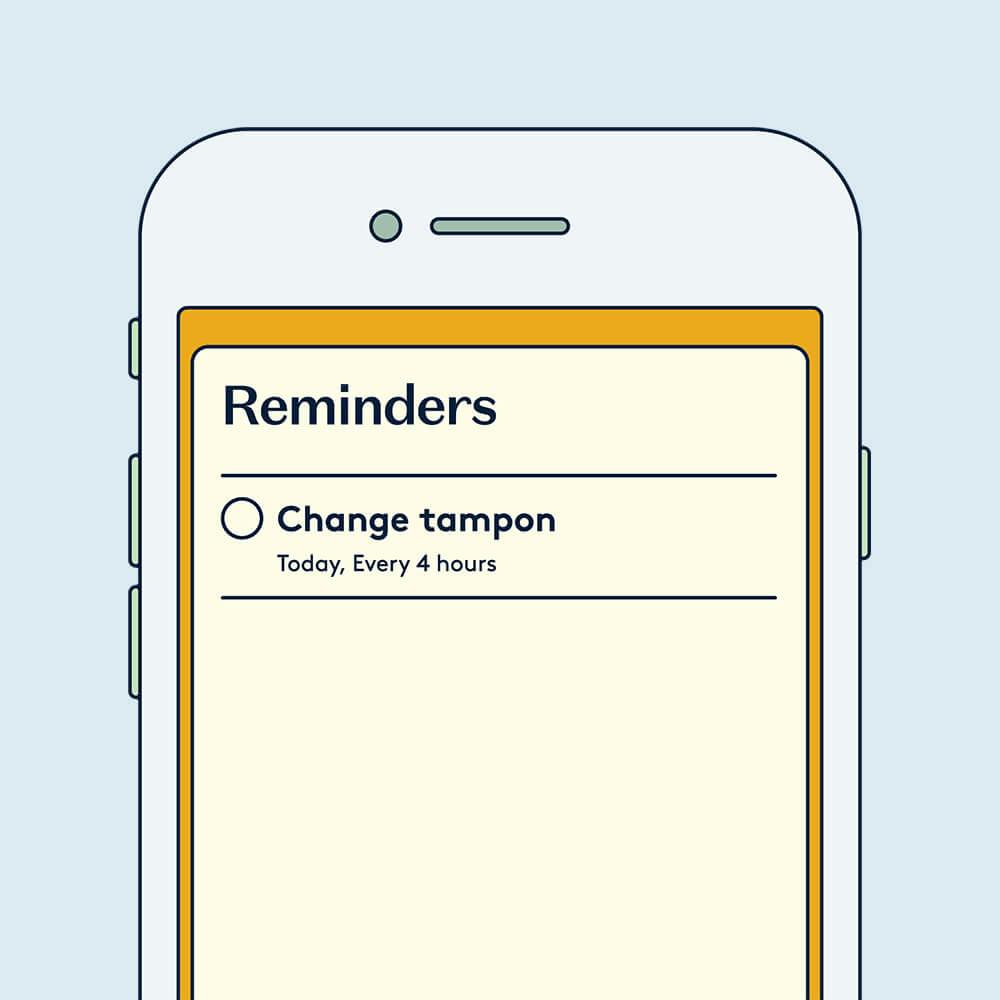Table of contents
Illustrated by Erin Rommel & Sabrina Bezerra
If you’ve ever used a tampon, you’ve probably worried at least once about it getting stuck inside you.
It’s unlikely that a tampon will get stuck inside your vagina, but it’s not impossible. “This is most commonly the result of human error,” says Dr. Rachel Chetwynd, who often seen this happen.
“Near the end of a period it can be easy to forget about a tampon. Common reasons that one might become stuck include having sex whilst a tampon is still in, or inserting another without removing the first.” Perhaps after a few too many drinks (we’re not judging). Or maybe, you went to change your tampon and found that the string is MIA.
Whatever the reason, retained tampons can happen (and it’s not ideal), so what should you do if a tampon is stuck? Keep reading for advice on what to do if your tampon ever goes rogue.
Can a tampon get lost inside you?
Although retained tampons are more common than you’d think, don’t worry, a tampon can't drift off into your body and get lost inside you.
The vagina is like a cul-de-sac (a fleshy dead end, if you will) and the cervix does a pretty good job at keeping the uterus closed.

“A common worry in women is that the tampon may become lost inside of them,” says Dr. Chetwynd. “This is a common misconception, it can’t really happen. The tampon may move high up in the vagina and twist so that the string is no longer visible, but it can’t move any further inside than the top of the vagina. This makes it pretty straightforward for a medical professional to remove, even if you are unable to remove it yourself.” So if a tampon gets stuck for whatever reason, fishing it out shouldn’t be a problem.
If you do have a retained tampon, though, you should probably remove it sharpish. It can’t wander off into your body, but a stuck tampon can cause discomfort and infection, and in rare cases lead to Toxic Shock Syndrome (TSS).
“You shouldn’t leave a tampon in for more than eight hours at a time. Risk of infection increases the longer a tampon remains inside,” says Dr. Chetwynd. “To reduce these risks it’s important to seek help from a medical professional if you find you cannot remove a tampon yourself.”
How to tell if you’ve forgotten a tampon inside you
Nobody is perfect, so forgetting to remove a tampon can happen to the best of us (especially if you’re forgetful).
In most cases you’ll be able to tell if you have a retained tampon thanks to a few warning signs. You may notice unusual, foul-smelling vaginal discharge, discomfort, and in some cases even vaginal bleeding.

How to remove a stuck tampon
If you need to remove a tampon that is stuck inside you, it’s definitely ok to DIY – as long as you feel comfortable getting up close and personal with your vagina.
“Don’t panic,” explains Dr. Chetwynd. “Try to relax – apart from anything this will help to relax your vaginal walls as well.” Your pelvic muscles clench when you’re anxious, which can make it harder to remove the tampon.
“Take up a squatting position (or sit on the toilet with your feet on a stool), bare down and if you can reach the string pull it. If you can’t find the string or this is uncomfortable, insert a finger and try to sweep around the inside of the vagina to see if you can reach the tampon and pull it out with your fingers. Do not insert anything else into the vagina to help you retrieve it.”
And please, make sure your hands are clean before digging around your vagina!

When should you call a doctor?
If the tampon isn’t budging with a DIY removal, or if you experience any sort of pain or discomfort, call your GP or a sexual health clinic, many of which do walk-in appointments.
“The process of removing a tampon is similar to that of a cervical screening,” explains Dr. Chetwynd.
“You’ll be asked to lie down with your knees to the side and a speculum is used to open the vagina up and see the tampon, it’s then removed. Remember the nurse or doctor doing this will have done this many times before so try not to feel embarrassed, these things happen!”
Dr. Chetwynd warns that even though it’s a rare condition, you shouldn’t hesitate to see a doctor if you experience any symptoms of TSS.
“Symptoms can occur suddenly and it can progress quickly. If you have a high temperature, nausea, diarrhoea, rash, dizziness, shortness of breath or confusion and have a retained tampon it’s important not to delay treatment and to make contact with healthcare professionals ASAP.”
In most cases, though, Dr. Chetwynd reassures that removing the tampon is all that needs to be done. “If you have symptoms of an infection then you might also be given some antibiotics to take. Other than that you can move on with your day.”
If you do ever get a tampon stuck, just know that doctors see this type of thing all the time. “It’s not something that happens the whole time so it’s not something to live in fear of if you are a tampon user. However, it’s common enough that you will definitely not be the first or last woman with a retained tampon seen by healthcare specialists working in sexual health or gynaecology. You can feel comfortable in the knowledge that it’s not a particularly unusual complaint and anyone you see will most likely have dealt with it many times before.”
If you’re prone to forgetting to change your tampon, it’s a good idea to set a reminder on your phone to prevent infection… or an unscheduled trip to the sexual health clinic!






